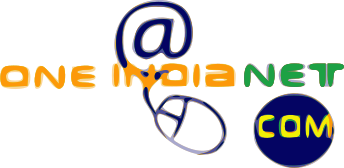Introduction USB-C has become the new standard connector for a wide variety of devices, from smartphones and laptops to monitors and external hard drives. This versatile connector offers numerous benefits over its predecessors, including faster data transfer speeds, higher power delivery, and a reversible design. In this comprehensive guide, we’ll explore the features of USB-C, how to make the most of it, and why it continues to improve.
What is USB-C? USB-C is a type of USB connector that is small, thin, and reversible. It is designed to replace older USB connectors, as well as other types of ports like HDMI, DisplayPort, and VGA. The key features of USB-C include:
- Reversibility: USB-C connectors can be inserted either way up, eliminating the frustration of trying to plug in a cable the wrong way.
- High-speed data transfer: USB-C supports the latest USB protocols, such as USB 3.2 and USB4, which offer data transfer speeds of up to 20Gbps and 40Gbps, respectively.
- Increased power delivery: USB-C can deliver up to 100W of power, allowing you to charge larger devices like laptops and monitors.
- Video output: USB-C supports various video protocols, enabling you to connect external displays with resolutions up to 8K.
USB-C vs. USB 3.1, 3.2, and 4.0 It’s important to note that USB-C refers to the physical connector, while USB 3.1, 3.2, and 4.0 are the underlying data transfer protocols. The table below summarizes the differences between these protocols:
| USB Protocol | Maximum Data Transfer Speed | Maximum Power Delivery |
|---|---|---|
| USB 3.1 Gen 1 | 5Gbps | 100W |
| USB 3.1 Gen 2 | 10Gbps | 100W |
| USB 3.2 Gen 1 | 5Gbps | 100W |
| USB 3.2 Gen 2 | 10Gbps | 100W |
| USB 3.2 Gen 2×2 | 20Gbps | 100W |
| USB4 | 40Gbps | 100W |
Devices That Use USB-C USB-C is becoming increasingly common in a wide range of devices, including:
- Smartphones and tablets
- Laptops and desktop computers
- External hard drives and SSDs
- Monitors and displays
- Docking stations
- Chargers and power banks
How to Get the Most from USB-C To fully take advantage of USB-C’s capabilities, consider the following tips:
- Invest in high-quality cables: Look for USB-C cables that support the latest protocols and are certified by the USB Implementers Forum (USB-IF) to ensure optimal performance and safety.
- Use a USB-C docking station: A docking station allows you to expand your laptop’s connectivity options, providing additional USB ports, video outputs, and Ethernet connections.
- Take advantage of fast charging: USB-C’s increased power delivery enables you to quickly charge your devices. Look for chargers and power banks that support USB Power Delivery (USB PD) for the best results.
- Upgrade your storage: USB-C’s high data transfer speeds make it ideal for external storage devices. Consider upgrading to a USB-C SSD for lightning-fast read and write speeds.
- Simplify your setup: USB-C’s versatility means you can often use a single cable to connect multiple devices, reducing cable clutter and simplifying your workspace.
The Future of USB-C As technology continues to advance, USB-C is poised to become even more capable and ubiquitous. Some of the developments on the horizon include:
- USB4 Version 2.0: This upcoming specification will double the maximum data transfer speed to 80Gbps, with the potential to reach 120Gbps in some configurations.
- Wider adoption: As more devices embrace USB-C, it will become easier to connect and charge your gadgets without the need for multiple cables and adapters.
- Thunderbolt integration: Intel’s Thunderbolt technology, which offers even higher data transfer speeds and video bandwidth, will be incorporated into future USB-C specifications, further enhancing its capabilities.
Troubleshooting USB-C Issues While USB-C is generally reliable, you may occasionally encounter issues. Here are some common problems and their solutions:
- Device not charging: Ensure that you’re using a high-quality, certified USB-C cable and a charger that supports USB Power Delivery. If the issue persists, try a different cable or charger.
- Slow data transfer speeds: Check that your cable and devices support the latest USB protocols. If you’re using a USB-C hub or adapter, make sure it’s compatible with your devices and doesn’t limit the data transfer speed.
- Display issues: Verify that your USB-C cable and devices support the required video protocols (e.g., DisplayPort Alt Mode). Try a different cable or adapter if the problem continues.
Conclusion USB-C is a game-changer in the world of connectivity, offering faster speeds, higher power delivery, and greater versatility than its predecessors. By understanding its features and capabilities, you can make the most of this innovative technology and streamline your digital life. As USB-C continues to evolve and improve, it will undoubtedly remain the connector of choice for a wide range of devices in the years to come.
Key Takeaways
- USB-C is a reversible, high-performance connector that supports fast data transfer, high power delivery, and video output.
- USB-C is compatible with various data transfer protocols, including USB 3.1, 3.2, and 4.0, as well as Thunderbolt.
- To get the most from USB-C, invest in high-quality cables, use a docking station, take advantage of fast charging, upgrade your storage, and simplify your setup.
- The future of USB-C includes even faster data transfer speeds, wider adoption, and Thunderbolt integration.
- Common USB-C issues can often be resolved by using certified cables and chargers, ensuring compatibility, and verifying support for the required protocols.
